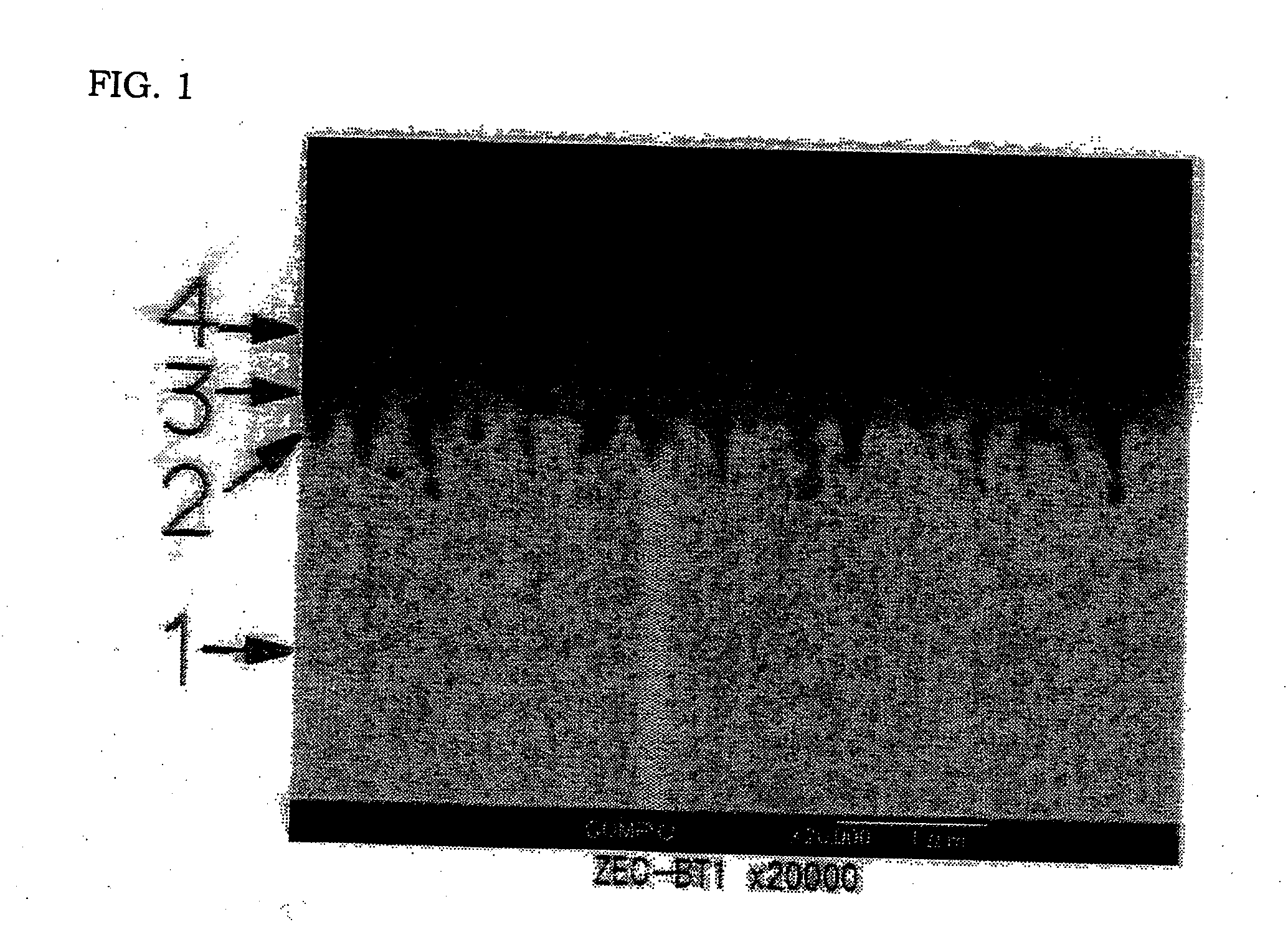Aqueous solution for blackening chemical conversion coating of zinc or zinc alloy surface and method of forming blackened Anti-corrosion coating film using the aqueous solution for the chemical conversion coating
- Summary
- Abstract
- Description
- Claims
- Application Information
AI Technical Summary
Benefits of technology
Problems solved by technology
Method used
Image
Examples
examples
[0057]Hereinafter, the present invention is specifically described with reference to Examples. However, the present invention is not intended to be limited by the following Examples.
examples 1 to 3
[0058]Hexagon headed bolts (M8×45 half screwed) made of SWCH (carbon steel material for cold forging) were subjected to cyanide-free alkaline bath (CFZ20, manufactured by SURTECMMC Japan) so as to prepare galvanized bolts having a thickness of 8-10 μm. The thus prepared bolts were used as test pieces. Compounds each having mass (g) shown in the upper part of Table 1 were dissolved in purified water sequentially in the described order so as to prepare one liter each of aqueous solution for blackening chemical conversion coating to be used in Examples (1), (2), and (3). In the lower part of Table 1, the content of each ion is shown by the g / L. At the time when all the compounds were dissolved, pH of the aqueous solution was 2. Three test pieces of galvanized bolts were immersed in the aqueous solution for blackening chemical conversion coating at 25° C. for 30 seconds, and then the test pieces were taken out.
TABLE 1Blackening Chemical Conversion Coating(g / L)Example 1Example 2Example 3...
example 4
[0068]The same surface treatment was carried out to three test pieces of Zn—Ni alloy plated hexagon headed bolts so as to form three layers of coating films on the surface of the Zn—Ni alloy plated layer as in Example 3 except that three bolts (M8×45 half screwed) were plated with Zn—Ni alloy to the thickness of 8 to 10 μm (co-deposition rate of Ni: about 15 weight %).
PUM
| Property | Measurement | Unit |
|---|---|---|
| Length | aaaaa | aaaaa |
| Length | aaaaa | aaaaa |
| Percent by mass | aaaaa | aaaaa |
Abstract
Description
Claims
Application Information
 Login to View More
Login to View More - Generate Ideas
- Intellectual Property
- Life Sciences
- Materials
- Tech Scout
- Unparalleled Data Quality
- Higher Quality Content
- 60% Fewer Hallucinations
Browse by: Latest US Patents, China's latest patents, Technical Efficacy Thesaurus, Application Domain, Technology Topic, Popular Technical Reports.
© 2025 PatSnap. All rights reserved.Legal|Privacy policy|Modern Slavery Act Transparency Statement|Sitemap|About US| Contact US: help@patsnap.com


